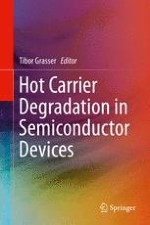2015 | OriginalPaper | Buchkapitel
Physics-Based Modeling of Hot-Carrier Degradation
verfasst von : Stanislav Tyaginov
Erschienen in: Hot Carrier Degradation in Semiconductor Devices
Aktivieren Sie unsere intelligente Suche, um passende Fachinhalte oder Patente zu finden.
Wählen Sie Textabschnitte aus um mit Künstlicher Intelligenz passenden Patente zu finden. powered by
Markieren Sie Textabschnitte, um KI-gestützt weitere passende Inhalte zu finden. powered by
